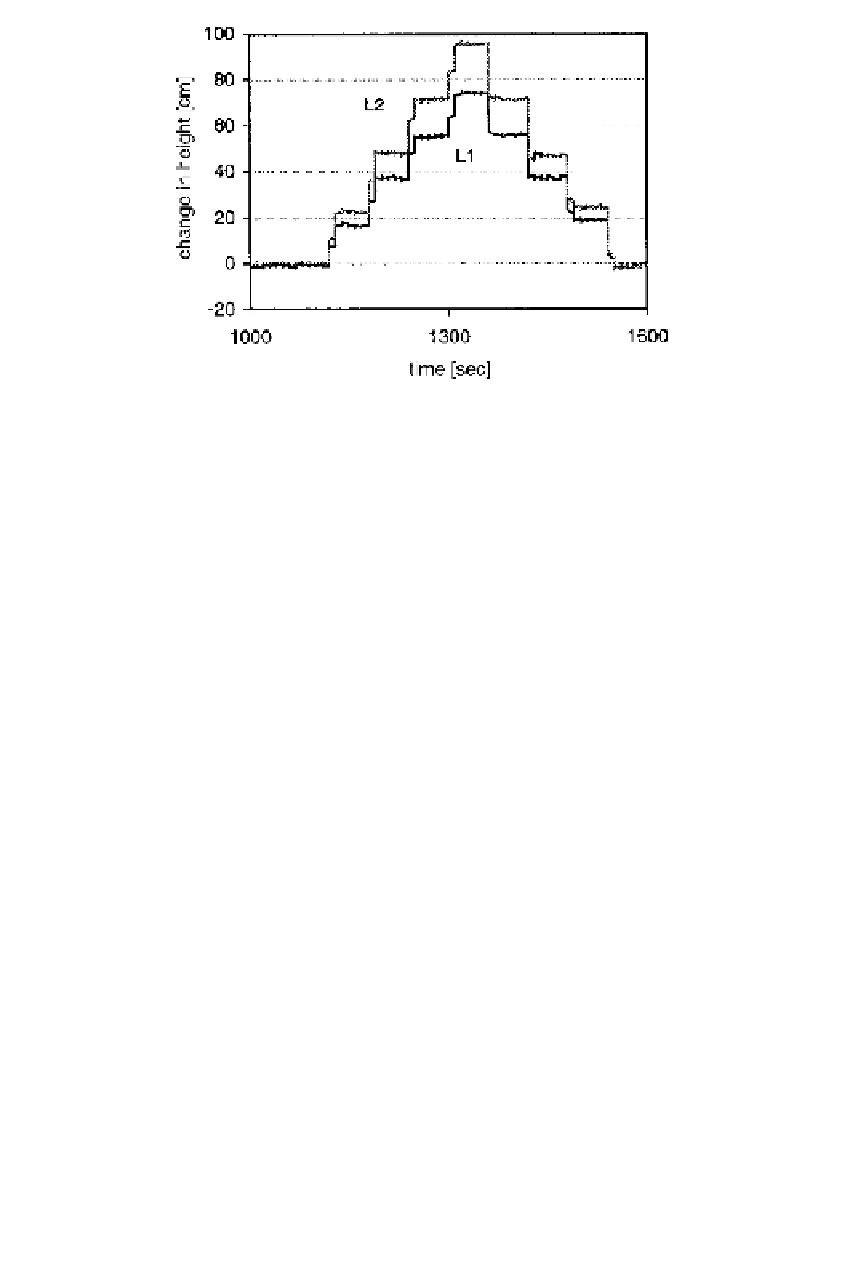Global Positioning System Reference
In-Depth Information
1
2
3
4
5
6
7
8
9
10
11
12
13
14
15
16
17
18
19
20
21
22
23
24
25
26
27
28
29
30
31
32
33
34
35
36
37
38
39
40
41
42
43
44
45
[23
Fi
gure 7.2
Antenna rotation test.
(Data from R. J. Muellerschoen, JPL.)
Lin
—
0.1
——
Nor
PgE
Figure 7.2 shows the results of a simple test to demonstrate RCP of GPS signals.
Two antennas, about 5 m apart, were connected to the same receiver and oscillator.
Observations were recorded once per second for half an hour. One of the antennas
was rotated 360° in azimuth four times clockwise (as viewed looking down on the
ground plate), with 1 minute between the rotations, and then four times rotated coun-
terclockwise, again with 1 minute between the rotations. The carrier phase observa-
tions were differenced and a linear trend was removed to account for the phase biases
and a differential rate (caused by the separation of the antennas). Figure 7.2 shows the
change in the single differences for both L1 and L2. Each complete antenna rotation
in azimuth causes a change of 1 wavelength.
An introductory discussion of the carrier phase windup correction for rotating
GPS antennas is found in Tetewsky and Mullen (1997). Wu et al. (1993) derived the
phase windup correction expressions for a crossed dipole antenna, but their results
are applicable to cases that are more general. Following their derivations, at a given
instant the windup correction is expressed as a function of the directions of the dipoles
and of the line of sight to the satellite.
Let
x
and
y
denote the unit vectors in the direction of the two-dipole elements in
the receiving antenna in which the signal from the
y
-dipole element is delayed by
90° relative to that from the
x
-dipole element.
k
is the unit vector pointing from
the satellite to the receiver. We consider a similar definition for
x
and
y
at the
satellite, i.e., the current in the
y
-dipole lags that in the
x
-dipole by 90°. They define
the effective dipole that represents the resultant of a crossed dipole antenna for the
receiver and the transmitter, respectively,
[23
d
=
x
−
k
(
k
·
x
)
+
k
×
y
(7.1)
k
k
x
−
d
=
x
−
y
·
k
×
(7.2)












































